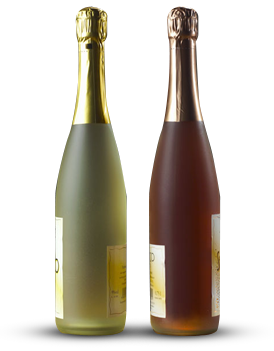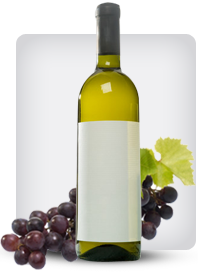

Tag: Like
How to Taste Wine Like a Sommelier
Posted onWine tasting is an art that combines sensory perception, knowledge, and practice. While sommeliers spend years honing their craft, you can learn the basics of professional wine tasting with a few key techniques. Follow this guide to elevate your wine appreciation skills and taste like a true connoisseur.
1. Observe the Wine’s Appearance
Before tasting, examine the wine’s color, clarity, and viscosity. Tilt your glass against a white background to assess the hue:
- Color Depth: A deeper color may indicate a fuller-bodied wine (e.g., Cabernet Sauvignon), while a lighter shade suggests delicacy (e.g., Pinot Noir).
- Clarity: Cloudiness could signal a fault, whereas brilliance is a sign of quality.
- Legs/Tears: Swirl the wine and observe the streaks on the glass—thicker legs may indicate higher alcohol or sugar content.
2. Smell the Aromas
A wine’s aroma (or “nose”) reveals much about its character. Follow these steps:
- First Sniff: Take a quick whiff to detect primary aromas (fruit, floral, or herbal notes).
- Second Sniff: Swirl the glass to aerate the wine and uncover secondary aromas (yeast, oak, or spice).
- Third Sniff: Look for tertiary aromas (aged characteristics like leather or tobacco in older wines).
3. Taste with Intention
Take a small sip and let the wine coat your palate. Focus on:
- Sweetness: Detect residual sugar (dry vs. sweet).
- Acidity: Crispness that makes your mouth water.
- Tannins: Bitterness or astringency (common in red wines).
- Body: Light, medium, or full mouthfeel.
- Finish: How long the flavors linger after swallowing.
4. Evaluate and Describe
Sommeliers use structured tasting notes. Try describing the wine in terms of:
- Fruit Profile: Berries, citrus, tropical, or stone fruit.
- Non-Fruit Notes: Vanilla, pepper, earth, or minerals.
- Balance: Harmony between sweetness, acidity, tannins, and alcohol.
5. Practice and Compare
The best way to refine your palate is to taste different wines side by side. Attend tastings, take notes, and discuss with fellow enthusiasts to deepen your understanding.
By mastering these techniques, you’ll not only enjoy wine more but also impress others with your refined tasting skills—just like a sommelier.
How to Look Like a Wine Expert
Posted onEver wonder why you see wine connoisseurs stick their noses into their wine glass when the wine steward brings a new bottle of wine to the table? They are “tasting” the wine with their noses.
Believe it or not, your tongue can only taste four things: sweet, salty, sour, and bitter. All the other nuances of taste actually come through a complicated relationship between taste and smell. It is the nose and the nasal passage at the back of the throat that make what we taste in our mouths flavorful.
Inspecting and smelling the cork and sniffing the wine lets the person who ordered the wine evaluate it before putting into his or her mouth. If the wine has been spoiled, these two steps will usually reveal the problem.
Improper wine storage or contamination with certain bacteria can make a wine taste perfectly terrible. You wouldn’t want to put it in your mouth.
After showing you the bottle and removing the cork, the sommelier, or wine steward, will hand you the cork to inspect and sniff. If the cork appears to have deteriorated or smells bad, you should immediately refuse the wine.
If all appears to be well with the cork, the sommelier will pour a small amount of the wine into your glass.
Keep the base of your glass flat on the table and swirl the wine gently around. This mixes air with the wine and vaporizes the complex aromas. Quickly lift the glass and stick your nose into the glass as far as you can and smell the wine.
Some people say that keeping your mouth open while you sniff the wine will help you perceive the full aroma.
When a wine is badly “flawed,” it will often be immediately apparent in it’s “nose,” which is the term wine lovers use for it’s smell. If the nose of the wine is not inviting, and you aren’t immediately tempted to taste it, don’t hesitate to return the bottle to your wine steward. You should immediately be offered a replacement bottle.
Keep in mind that if there are strong scents around you, they can compete with the wine you are evaluating. If you or the person next to you are wearing strong perfume, this can throw off your nose. If there is pungent food being served nearby, this can also affect what you smell in the wine glass.
Once your nose has had first crack at the wine, and the wine has passed the nose test, then take a sip and swirl the wine around in your mouth. Give the sommelier a nod if you approve, and only then will he proceed to serve your chosen wine to your guests at the table.
Related Malbec Wine Articles
popular posts
-

Aging Potential of Premium Pinot Noir: Unlocking the Elegance of Time Among the world’s noble grape varieties, Pinot Noir holds a unique and almost mythical status
12-30 2025Celebrated for its ethereal aromatics, silky texture, and captivating expression of *terroir*, it is often considered the most transparent conduit from vineyard to glass. Read More
-

Food Pairing with Full-Bodied Cabernet Sauvignon Few wines command a table with the authority of a full-bodied Cabernet Sauvignon
12-29 2025With its deep, inky color and powerful structure built on robust tannins, dark fruit flavors, and often a hint of oak, it’s a wine Read More

